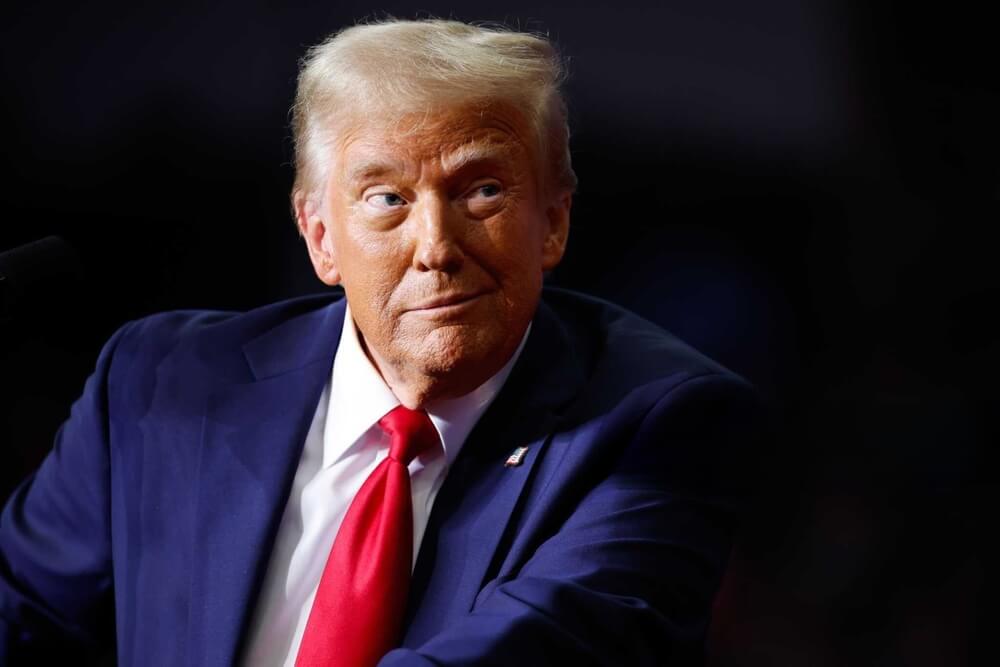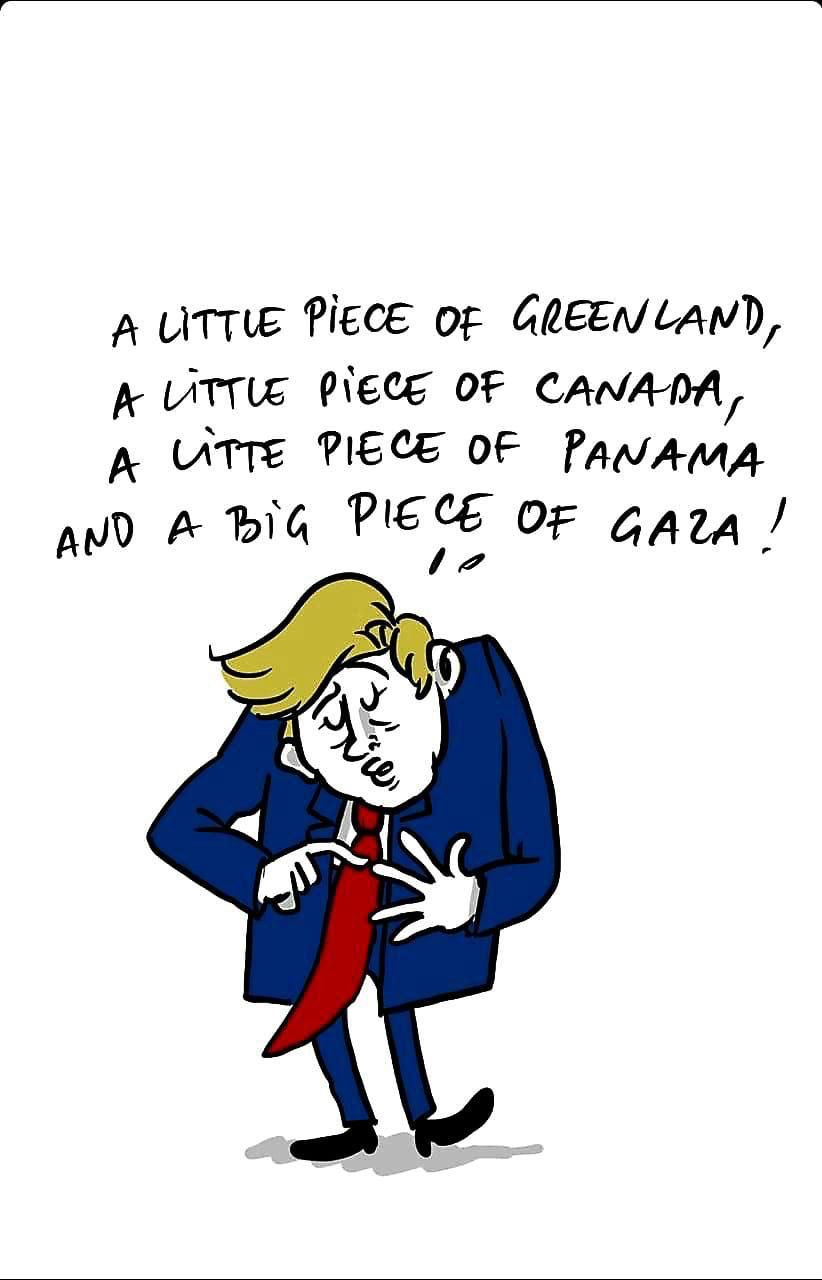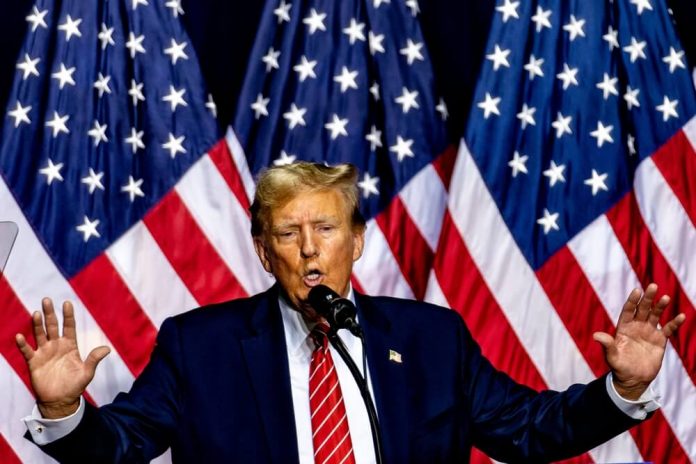Don Quixote and Sancho set out, mounted on a donkey. In their first adventure, Don Quixote mistakes a field of windmills for giants and attempts to fight them, only to conclude that a magician must have turned the giants into windmills.
In the chaotic and unpredictable world of politics, few figures can captivate the masses quite like Donald Trump. Love him or loathe him, there is no denying his ability to command attention. With his larger-than-life personality, bombastic rhetoric, and unfiltered X (formerly Twitter) rants, Trump cannot stop mouthing phrases about himself: I am the greatest. I am the best.
Donald Trump’s personality is a blend of bravado and brashness, yet he lacks credibility, compassion, wit, warmth, wisdom, subtlety, sensitivity, humility, and grace. He is a bully—unpredictable and devoid of the qualities that so generously blessed his predecessors.
His catchphrases and slogans, such as ‘Make America Great Again’, have become rallying cries for those who feel overlooked by the political establishment. By positioning himself as an outsider, Trump has effectively tapped into a deep vein of voter discontent, blending entertainment with political messaging.
Trump’s rise to the presidency marked a seismic shift in American politics, characterised by a unique mix of populism, nationalism, and a penchant for confrontation. His leadership style, often described as demagogic, is defined by a direct appeal to emotions and prejudices rather than reasoned arguments. This approach has reshaped the political landscape, creating an environment where divisive rhetoric became the norm. His ability to galvanise a dedicated base, often through incendiary language, has raised questions about his statesmanship.
WhatsApp forward. Source unknown
By framing issues in stark, black-and-white terms, he has successfully painted himself as a champion of the common man, standing against a supposedly corrupt elite. This rhetoric has not only polarised the electorate but has also fostered an atmosphere where dissenting voices are silenced or ridiculed. The consequences of such a leadership style extend beyond political discourse; they have cultivated a culture of hostility and distrust, undermining the very institutions that uphold democracy.
One of the most striking aspects of Trump’s presidency was his prolific use of Twitter, which he employed as a primary communication tool. His tweets transformed how political leaders engage with the public. Beneath the spectacle and theatrics lies a shrewd strategist who understands the power of image and branding. Trump’s tweets frequently blurred the lines between fact and fiction, contributing to a climate of misinformation that challenges the very foundations of informed democratic discourse.
This direct line to the public empowered him to address issues at lightning speed, allowing rapid responses to criticism or events. However, it also created a culture where inflammatory comments escalated tensions and deepened divisions, often overshadowing substantive policy discussions. His tweets, designed to provoke emotional reactions, served as both a rallying cry for supporters and a source of outrage for opponents.

Fear is a powerful motivator, uniting people against perceived threats to their well-being, their families, or their country. The issue of immigration was at the heart of Trump’s campaign, driven by the fear that migrants would displace American workers. The public was encouraged to hate migrants because they were painted as the enemy—people who had stolen jobs. In a battle between a snake and a mongoose, everyone sides with the mongoose.
Trump’s tweets not only shaped his image but also contributed to a broader shift in how political information is consumed and interpreted. This phenomenon presents significant challenges for the public, who must navigate a landscape rife with misinformation and polarisation.
Throughout his campaign, Trump became known for his controversial statements—many of which were outright lies or insults. This pattern raises crucial questions about the nature of truth in politics and the responsibilities of a leader. His penchant for derogatory language, often directed at opponents, has fostered a culture of incivility in political discourse. His tendency to dismiss critics through insults has not only alienated individuals but has also set a troubling precedent for political engagement.
The normalisation of aggressive language and personal attacks has had global consequences, with leaders in other countries adopting similar tactics. It has now become acceptable for a leader to lie and use abusive language. If the President of the United States of America can do so, why not the president of Timbuktu?
This disconnect in public opinion underscores the challenges of governance in a polarised environment, where compromise and collaboration are increasingly difficult. The inability to bridge these divides raises concerns about the future of democratic processes and the potential for further fragmentation.
Supporters view Trump’s direct and unfiltered approach as a refreshing departure from typical political discourse. Conversely, critics argue that his rhetoric has fuelled a culture of incivility and intolerance. As public opinion continues to evolve, the legacy of Trump’s presidency will likely be defined by the lasting impact of his words and actions on the political landscape and the ability of Americans to engage in meaningful dialogue.
If there was one hallmark of Trump’s presidency, it was his divisive rhetoric. From the campaign trail to the Oval Office, Trump consistently used inflammatory language that deepened America’s political and social divides. His speeches and tweets frequently targeted marginalised communities, political opponents, and even members of his own party who dared to criticise him.
Trump’s use of social media as a megaphone for his grievances and personal attacks was unprecedented. His infamous late-night Twitter rants became both a source of entertainment and a cause for alarm. Critics argue that his unfiltered communication eroded the dignity of the presidency and contributed to a culture of incivility in public discourse. Trump also lies easily—fluently, shamelessly, and constantly. He has lied about his net worth, his reasons for not releasing his tax returns, and his charitable donations.


Two images– Caption: WhatsApp forward. Source unknown
In today’s social media-driven society, fear and hate spread faster than the speed of lightning. Fear can unite people, forming a bond over negativity. A politician can exploit this by rallying people around a shared enemy. Hate enables the public to overlook outright lies, crimes, poisonous narratives, imaginary threats, and narcissism. Trump’s incendiary remarks have been excused repeatedly, but once in office, it was intriguing to see how he translated his threats into policy. The circus of Donald Trump had just begun.
To call the President of the United States of America debauched may not be appropriate, but it is factual that he is a felon, convicted of sexual misconduct by a federal judge in the US District Court for the Southern District of New York. Though pardoned, Trump has been accused of sexual misconduct by multiple women. In 2018, Stormy Daniels provided explicit details in a book. Trump denied the allegations. Throughout his career, Trump faced accusations of sexual harassment and misconduct, but it was only during his presidency that he encountered legal consequences. Despite these accusations, he remained defiant and unapologetic, dismissing all claims as politically motivated.
The United States positions itself as the global conscience-keeper on human rights, yet it deported migrants in handcuffs and chains, starving them for forty hours. Only Venezuela stood up to the U.S., sending a flight back and welcoming its citizens with dignity. Why didn’t India do the same? Trump, a sadist, separated the children of illegal immigrants from their parents at the border—one of the most controversial and heart-wrenching policies of his administration. The implementation of this act tore thousands of families apart. Images and videos of crying children held in cages shocked and enraged the world. One wonders how he would feel if Barron Trump were separated from him in such a fashion.
Trump’s stance on tariffs was another contentious issue. His imposition of tariffs led to retaliatory measures, sparking fears of a global recession.
His ridiculous claims—wanting to make Canada the 51st state, take over Greenland, seize the Panama Canal, or control the Gaza Strip—are laughable, as is much of his rhetoric. Yet Trump lacks a sense of humour. His idea of a joke is a crass comment, an illiterate insult, or a casual act of cruelty. Frighteningly, he does not merely speak in crude, witless, insulting terms—he genuinely thinks that way.
The people of America will pay a price for electing Donald Trump. Keep watching—the circus has only just begun



